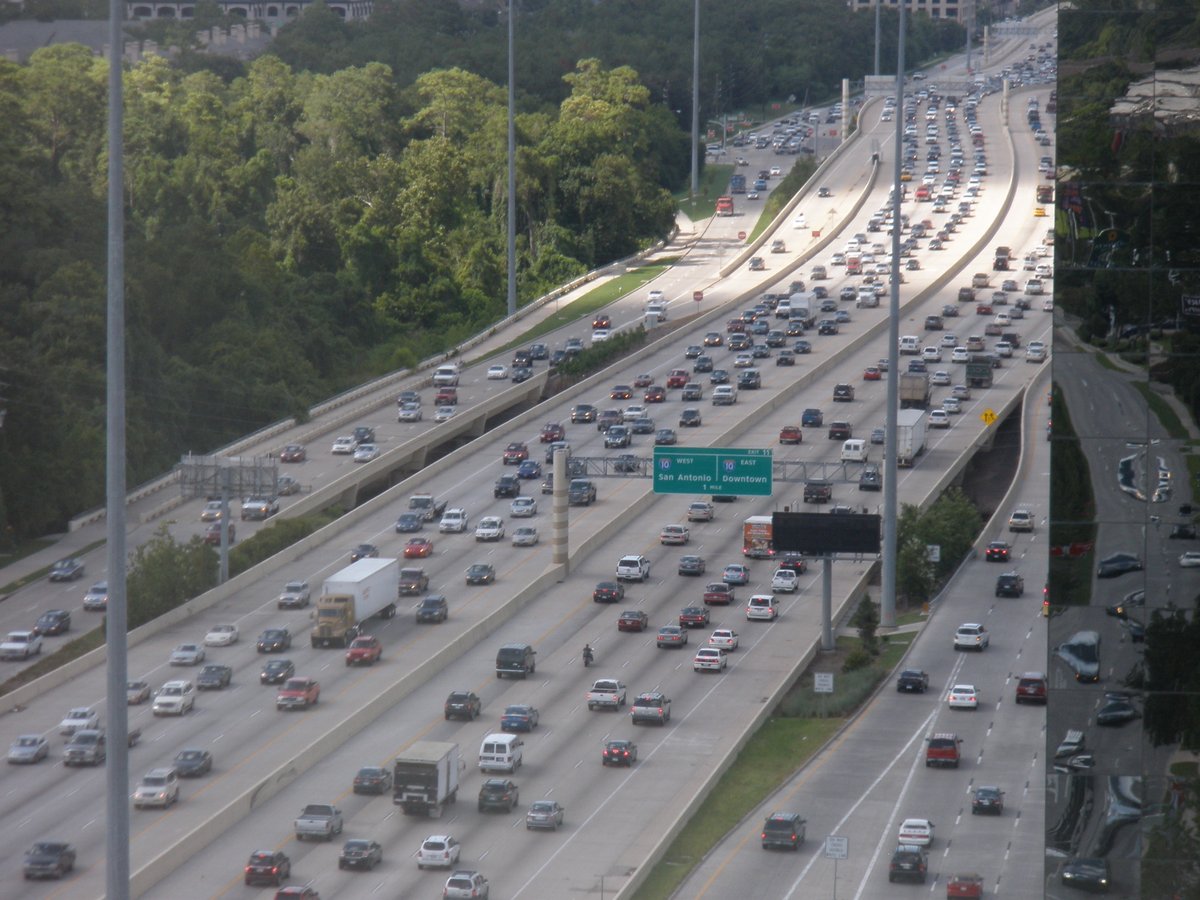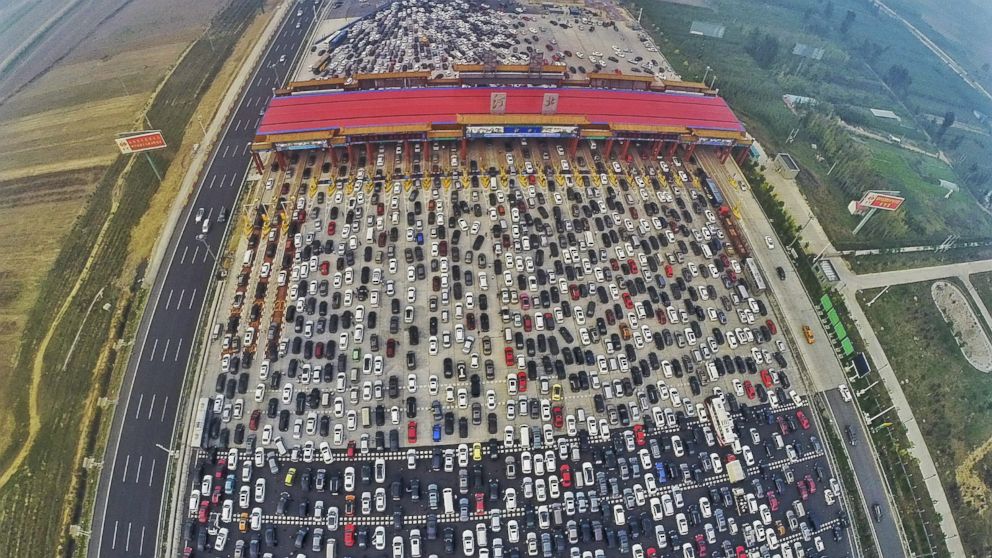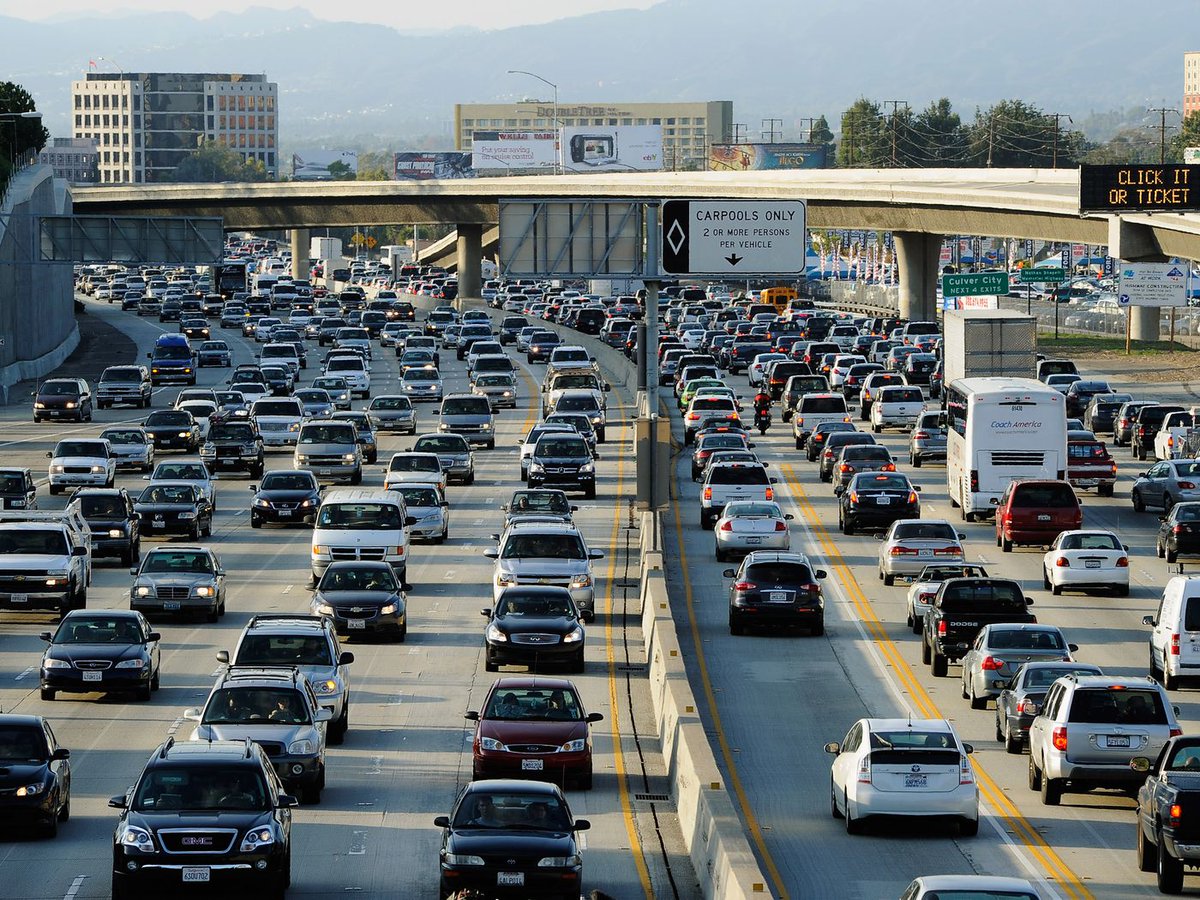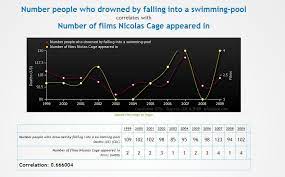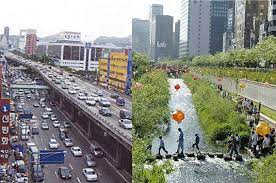This week, I asked folks to name an idea in urbanism that they wish got more attention.
One caught my eye more than any other: induced demand.
It’s got perhaps the least sexy name ever, but it’s vital in understanding how our roads work.
So, here’s a thread explaining it.
One caught my eye more than any other: induced demand.
It’s got perhaps the least sexy name ever, but it’s vital in understanding how our roads work.
So, here’s a thread explaining it.
Have you ever been driving somewhere, stuck in extremely annoying traffic, looked around at the space around you and thought: if they just built more bloody lanes I wouldn’t be trapped here right now?
Well, you’re not alone.
Well, you’re not alone.
For generations, the folks who built roads felt the exact same way.
So they kept building lanes.
And when those lanes got too congested they’d build more. And more. And more. Until some of the world’s roads literally started looking like this:
So they kept building lanes.
And when those lanes got too congested they’d build more. And more. And more. Until some of the world’s roads literally started looking like this:
After decades of trying this approach and finding that traffic stubbornly refused to go away — two blokes named Matthew Turner and Gilles Duranton decided something funky must be going on.
And being economists (read: nerds), they decided to run a study.
And being economists (read: nerds), they decided to run a study.
Turner and Duranton looked at the amount of new roads and highways built in different US cities between 1980 and 2000 and compared them to the total number of miles driven in the cities over the same period.
Guess what they found?
Guess what they found?
If a city had increased its road capacity by 10% in those 20 years, the amount of driving also went up 10%.
If a city had increased its road capacity by 11%, the amount of driving also went up 11%.
If a city had increased its road capacity by 12%.. oh you get it right?
If a city had increased its road capacity by 11%, the amount of driving also went up 11%.
If a city had increased its road capacity by 12%.. oh you get it right?
There was a direct 1:1 correlation. For every percentage point of increased road capacity there was an equivalent increase in driving.
But as anyone who has ever seen that graph of Nic Cage films versus drownings knows: correlation doesn& #39;t necessarily equal causation
But as anyone who has ever seen that graph of Nic Cage films versus drownings knows: correlation doesn& #39;t necessarily equal causation
But in this case, Turner and Duranton (reminder: nerds) believed that it did. So they developed a theory that they called the Fundamental Law of Road Congestion.
Basically, it says that new roads create new drivers — meaning traffic always stays the same.
Basically, it says that new roads create new drivers — meaning traffic always stays the same.
Now at this point if you, like me, are asking: who the bloody hell are all these new drivers?
Then you’re in luck — because Turner and Duranton have the answer.
And the answer is linked to what roads allow people to do: move around.
Then you’re in luck — because Turner and Duranton have the answer.
And the answer is linked to what roads allow people to do: move around.
Building more lanes makes driving easier, initially. So then some folks decide to move further afield from their work to somewhere that real estate is cheaper and things are greener — knowing they can just drive into the office!
But they’re not the only ones! Businesses who rely on roads will swoop into cities with loads of them, bringing trucking and shipments along with them. More roads? Easier driving? Here comes Uber and Lyft and Amazon too.
All of a sudden your roads are just as congested as they were at the start — because as long as driving remains easy and cheap, people have an almost unlimited desire do it.
So why is all of this so important to understand? (*cough* cancel the Silvertown Tunnel *cough*).
Because the opposite is also true. When you take away road capacity, fewer people drive — and traffic doesn’t get better — but it doesn’t get worse either.
Because the opposite is also true. When you take away road capacity, fewer people drive — and traffic doesn’t get better — but it doesn’t get worse either.
How do we know that? Because we’ve seen it happen time and time again. When San Francisco removed a section of its Central Freeway that carried 100,000 cars a day and replaced it with a road that can only carry around 45,000 — traffic didn’t get any worse.
In Seoul, in South Korea, the city removed a highway that moved 168,000 cars a day and replaced it with a river and a park. Traffic in the city didn’t get any worse, but other things, like air pollution — got considerably better.
So does this mean we should start tearing up all of our roads and start replacing them with rivers and forests and bike lanes? No — roads are an important part of our cities and some people do need them to get around.
But it does mean we should re-design many of our roads to make them more attractive for walking and cycling and more annoying to drive on.
Because doing so won’t cause more traffic, but it will help folks leave their cars at home, leading to cleaner air and a healthier climate.
Because doing so won’t cause more traffic, but it will help folks leave their cars at home, leading to cleaner air and a healthier climate.
Luckily this is already happening all across the UK. During COVID - emergency bike lanes, 24/7 bus lanes, low traffic neighbourhoods, widened pavements, streateries and pedestrian only areas have all been introduced - bolstered by the evidence of what we know about induced demand
Want to learn more about induced demand? You’re a beautiful nerd. Here’s where you can do just that: https://www.wired.com/2014/06/wuwt-traffic-induced-demand/">https://www.wired.com/2014/06/w...
I don& #39;t have a soundcloud but if you enjoyed this thread I& #39;d be grateful if you signed this petition to cancel the silvertown tunnel https://www.change.org/p/the-london-mayoral-office-stop-the-silvertown-tunnel">https://www.change.org/p/the-lon...

 Read on Twitter
Read on Twitter